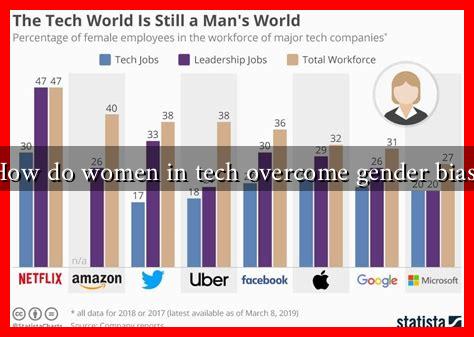-
Table of Contents
How Do Women in Tech Overcome Gender Bias?
Gender bias in the tech industry is a pervasive issue that has been documented extensively. Women in tech often face challenges that their male counterparts do not, including stereotypes, unequal pay, and limited opportunities for advancement. However, many women are finding innovative ways to overcome these barriers and thrive in their careers. This article explores the strategies women in tech employ to combat gender bias, supported by relevant examples and statistics.
The Landscape of Gender Bias in Tech
Before delving into the solutions, it is essential to understand the scope of gender bias in the tech industry. According to a report by McKinsey & Company, women hold only 28% of leadership roles in tech, and the gender pay gap persists, with women earning approximately 83% of what their male counterparts make for similar roles. These statistics highlight the systemic issues that women face in the industry.
Strategies for Overcoming Gender Bias
Women in tech are employing various strategies to navigate and overcome gender bias. Here are some of the most effective approaches:
- Building a Support Network: Women are increasingly forming networks and communities to support one another. Organizations like Women in Tech and Girls Who Code provide mentorship, resources, and a sense of belonging.
- Advocating for Themselves: Women are learning to negotiate salaries and promotions more effectively. Research from the American Association of University Women (AAUW) shows that women who negotiate their salaries can increase their earnings significantly.
- Leveraging Data: Women are using data to highlight their contributions and successes. By quantifying their achievements, they can make a stronger case for promotions and raises.
- Engaging in Continuous Learning: Many women are pursuing further education and certifications to enhance their skills and qualifications, making them more competitive in the job market.
- Creating Inclusive Work Environments: Women are advocating for policies that promote diversity and inclusion within their organizations. This includes pushing for unbiased hiring practices and equitable pay structures.
Case Studies of Success
Several women in tech have successfully navigated gender bias and emerged as leaders in their fields. Here are a few notable examples:
- Reshma Saujani: Founder of Girls Who Code, Saujani has been a vocal advocate for women in tech. Her organization has helped thousands of girls learn coding and pursue careers in technology.
- Sheryl Sandberg: As the COO of Facebook, Sandberg has been a prominent figure in advocating for women in leadership roles. Her book, “Lean In,” encourages women to take charge of their careers and challenge gender norms.
- Kimberly Bryant: Founder of Black Girls Code, Bryant is dedicated to increasing the number of women of color in tech. Her organization provides workshops and resources to empower young girls to pursue careers in technology.
The Role of Companies in Supporting Women
While women are taking significant steps to overcome gender bias, companies also play a crucial role in fostering an inclusive environment. Here are some ways organizations can support women in tech:
- Implementing Diversity Training: Companies should provide training to all employees to raise awareness about gender bias and promote inclusive behaviors.
- Establishing Mentorship Programs: Organizations can create mentorship programs that pair women with experienced leaders who can provide guidance and support.
- Promoting Work-Life Balance: Flexible work arrangements can help women manage their professional and personal responsibilities more effectively.
- Setting Diversity Goals: Companies should set measurable diversity goals and hold leadership accountable for achieving them.
Conclusion
Gender bias in the tech industry remains a significant challenge, but women are finding ways to overcome these obstacles through support networks, self-advocacy, and continuous learning. By leveraging data and creating inclusive environments, women are not only advancing their careers but also paving the way for future generations. Companies must also take proactive steps to support women in tech, ensuring that the industry becomes more equitable and diverse. Together, these efforts can lead to a more inclusive tech landscape where everyone has the opportunity to succeed.



